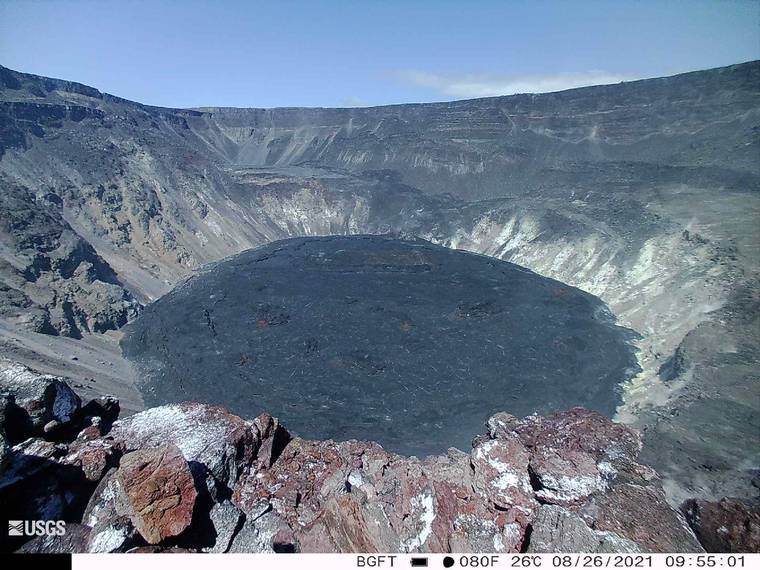The Hawaiian Volcano Observatory reported Thursday morning the earthquake swarm that began Monday beneath the south part of Kilauea caldera, within Hawaii Volcanoes National Park, has waned.
Within the past 24 hours, only 10 earthquakes have been detected in this area, the observatory said. The earthquake swarm began in that region at around 4:30 p.m. Monday and continued until Wednesday morning.
With the reduction, the observatory lowered the Volcano Alert Level/Aviation Color Code for Kilauea from “WATCH/ORANGE” to “ADVISORY/YELLOW” reflecting this decrease in activity levels.
The observatory said 478 earthquakes were detected during the swarm; the rate of earthquakes detected per hour peaked at 28 events between 7 and 8 p.m. Tuesday. Most of the earthquakes were between magnitude-1.0 and magnitude-2.0 and occurred approximately 0.6 to 1.2 miles below the Earth’s surface.
The earthquake swarm was accompanied by change in the rate and style of ground deformation, the observatory said. Ground deformation in the Kilauea summit region has leveled off within the past 24 hours and rapid inflation near the region of the south caldera is no longer being observed.
“Earthquake activity and ground deformation have decreased together to levels that indicate magma is no longer moving into the region of Kilauea’s south caldera. These changes indicate reduced potential for an eruption at this time,” the observatory said.
Kilauea summit sulfur dioxide (SO2) emission rates remain at very low levels that have persisted since May, when the most recent summit eruption ended. Concentrations of SO2 in ambient air, measured at stations in the Kilauea summit region, show no changes. The most recent SO2 emission rates, measured on Aug. 12, were 50 tonnes per day, close to levels associated with the non-eruptive period from late 2018 to late 2020 (less than 50 tonnes per day). This is significantly lower than emission rates that averaged over 800 tonnes per day from mid-February to mid-April when the summit eruption of Kilauea was ongoing.

